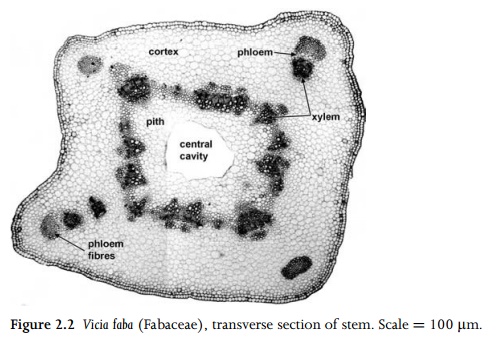Chapter: Anatomy of Flowering Plants: An Introduction to Structure and Development : Organs, Cells and Tissues
Plant Ground Tissue
Ground Tissue
Ground
tissue, sometimes termed packing tissue, forms the bulk of primary plant tissue
and occupies the areas that are not taken up by vascular tissue or cavities. It
has a mechanical function, and may be concerned with storage or photosynthesis.
Ground tissue typically consists of parenchyma, sclerenchyma or collen-chyma,
and is often interspersed with idioblasts and secretory cells or canals. Ground
tissue is initially formed at the apical meristems but may be supplemented by
intercalary growth, and in monocots by tissues differentiated from primary and
secondary thickening meristems. In dicots the ground tissue of secondary xylem
(wood), formed by the vascular cambium, consists of fibres and axial
parenchyma. In older stems the central area of ground tissue (pith) often
breaks down, leaving a cavity (Fig. 2.2)

Related Topics